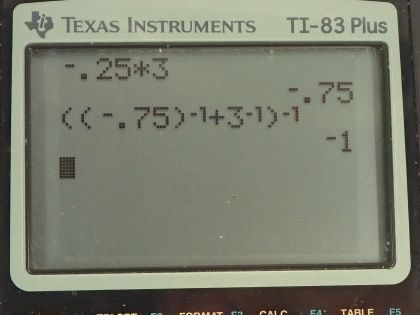Question
A shopper standing 3.00 m from a convex security mirror sees his image with a magnification of 0.250. (a) Where is his image? (b) What is the focal length of the mirror? (c) What is its radius of curvature? Explicitly show how you follow the steps in the Problem-Solving Strategy for Mirrors.
Final Answer
Solution video
OpenStax College Physics for AP® Courses, Chapter 25, Problem 58 (Problems & Exercises)

vote with a rating of
votes with an average rating of
.
Calculator Screenshots
Video Transcript
This is College Physics Answers with Shaun Dychko. A person stands 3.0 meters away from a convex security mirror and sees an image of themselves that's magnified by 0.250. So the question in part (a) is where is the image located, how far is it from the mirror? So magnification is negative image distance divided by object distance so we wanna solve for d i, multiply both sides by negative d o and the image distance then is negative of the magnification times the object distance. So that's negative of 0.250 multiplied by 3.00 meters and that's negative 0.750 meters and this negative sign indicates that the image is behind the mirror. Okay! So part (b) is asking what is the focal length of this mirror? Well, 1 over focal length is 1 over d i plus 1 over d o and these fractions can each be written as d i to the power of negative 1 and d o to the power of negative 1 instead of writing them as 1 over this... exponent negative 1 is the same as saying reciprocal and then raise both sides to the negative 1 and we have the focal length then is image distance to the negative 1 plus object distance to the negative 1 all to the negative 1. So that's negative 0.750 meters to the negative 1 plus 3.00 meters to the negative 1 all to the exponent negative 1 giving us negative 1.00 meters. This negative sign means the mirror is convex, which we already knew and it is good to see that our work confirms what we already knew. Part (c) is asking what is the radius of curvature? So focal length is the radius of curvature divided by 2 for a mirror and we can multiply both sides by 2 to solve for R. So R is 2 times focal length that's 2 times negative 1.00 meters and that is negative 2.00 meters is the radius of curvature.
